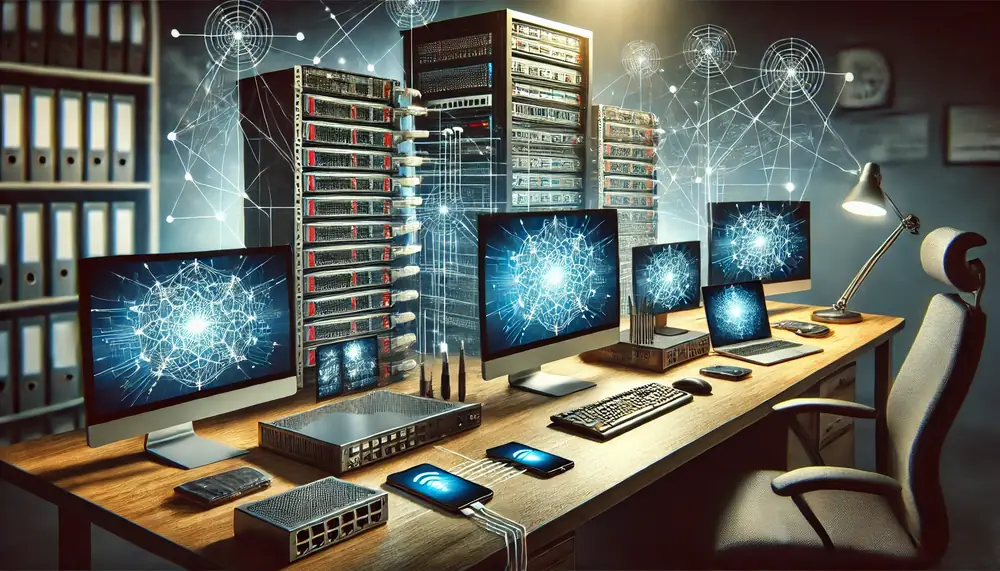Demystifying Networking: Everything You Need to Know as a Beginner
 Kartik Patil
Kartik Patil
Introduction:
In today’s interconnected world, understanding the basics of networking is not just valuable for IT professionals but essential for anyone looking to thrive in the digital age. I recently attended a live training session on networking that offered insights into how the internet works, network architectures, protocols, and more. Here's a summary of what I learned and why it matters.
How Does the Internet Work?
The internet is essentially a massive network of networks. It functions through a combination of hardware (like routers, switches, and cables) and software (protocols and applications). When you send an email or browse a website, data is broken into packets, transmitted across various paths, and reassembled at the destination, all in milliseconds.
Network Types:
LAN, MAN, WAN, and PAN Networks come in different sizes and purposes:
LAN (Local Area Network): Covers small areas like homes or offices. It is commonly used for connecting computers, printers, and other devices within a limited area.
MAN (Metropolitan Area Network): Spans cities or large campuses. For example, city-wide Wi-Fi networks or metro Ethernet solutions used by businesses.
WAN (Wide Area Network): Connects large geographical areas, such as the internet itself. It allows organizations with multiple locations to communicate efficiently.
PAN (Personal Area Network): Links personal devices like smartphones, smartwatches, and laptops, typically via Bluetooth or Wi-Fi.
OSI and TCP/IP Models:
Understanding these models helps decode how data travels over a network:
- OSI Model (Open Systems Interconnection): The OSI model is a conceptual framework with seven layers:
Physical Layer: Deals with the physical hardware like cables, switches, and signals.
Data Link Layer: Manages node-to-node data transfer and error detection.
Network Layer: Handles routing and forwarding of data packets (e.g., IP addressing).
Transport Layer: Ensures reliable data transfer with protocols like TCP.
Session Layer: Establishes and manages communication sessions.
Presentation Layer: Translates data formats (e.g., encryption and compression).
Application Layer: Interfaces with end-users through applications like browsers and email clients.
- TCP/IP Model (Transmission Control Protocol/Internet Protocol): The TCP/IP model is more practical and widely used. It consists of four layers:
Network Access Layer: Combines the OSI’s Physical and Data Link layers to manage hardware interaction.
Internet Layer: Corresponds to the Network layer in OSI and is responsible for IP addressing and routing.
Transport Layer: Ensures reliable communication using TCP or faster, less reliable communication with UDP.
Application Layer: Encompasses the functionalities of OSI’s top three layers, providing user-facing services like HTTP, FTP, and DNS.
Key Protocols and Their Roles:
Protocols define the rules for data exchange. Examples include:
HTTP/HTTPS: Web browsing.
SMTP/IMAP: Email communication.
FTP/SFTP: File transfers.
DNS: Translating domain names to IP addresses.
Subnetting and IP Addressing:
Subnetting divides larger networks into smaller, manageable segments. Each device on a network has an IP address (IPv4 or IPv6) for unique identification. Meanwhile, MAC addresses ensure device-level communication within local networks.
The Role of Routers, Switches, and Firewalls
Routers: Direct traffic between networks.
Switches: Connect devices within a network.
Firewalls: Enhance security by filtering unwanted traffic.
Ports and Protocols:
Ports act as communication endpoints for protocols like HTTP (port 80) or HTTPS (port 443). Understanding these can help diagnose connectivity issues and secure networks.
Client-Server Architecture:
Client-server architecture is the backbone of modern networking. It is a distributed system design where a central server provides resources, services, or data to multiple clients (users or devices). Here’s how it works:
Client Role: The client is typically the user-facing application or device. It initiates requests for services, such as opening a website, accessing an email, or querying a database.
Server Role: The server processes the client’s request and delivers the required service or data. Examples include web servers, email servers, and file servers.
How It Works:
The client sends a request to the server over the network, often using a specific protocol (e.g., HTTP for web pages).
The server processes this request, retrieves the necessary data, and sends a response back to the client.
The client receives and displays or processes the data, completing the interaction.
Conclusion:
Networking is the backbone of our digital world. From understanding protocols to leveraging tools like routers and firewalls, mastering these concepts can empower anyone to navigate and contribute to the tech landscape effectively. I’m excited to delve deeper and share my journey. Let’s connect and grow together!
Subscribe to my newsletter
Read articles from Kartik Patil directly inside your inbox. Subscribe to the newsletter, and don't miss out.
Written by
